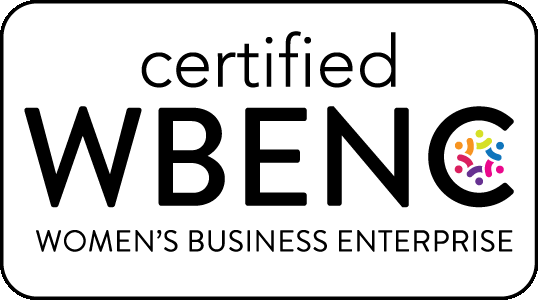Long before we ever heard the term “coronavirus,” employee mental health was declining. Now, as we enter a post-pandemic world, we’re coming to terms with how the stress, isolation, grief, burnout, and caregiving challenges experienced by employees during the pandemic have made the mental health problem that much worse.
If we can point to a so-called “silver lining” in all of this, it’s that employers are now much more aware of the role they need to play in helping employees with their mental health. For example, during May’s Mental Health Awareness Month, employees will likely see lots of messages from employers about the importance of taking care of their mental health.
Despite this heightened awareness and stepped-up resources, there’s still a pretty big elephant in the room—and that is the persistent stigma of talking about mental health in the workplace.
Whether it’s the fear of being seen as weak or unstable, or the feeling that their manager or coworkers may think they can’t do their jobs, many employees are often reluctant to bring up a mental health concern or seek help. However, breaking down the stigma of mental health in the workplace—a place where we spend up to one-third of our lives and the source of a lot of our stress—is exactly what needs to happen to begin to move the needle on mental health.
Creating a mental health campaign that helps overcome workplace stigmas isn’t easy. The O’Keefe Group recently partnered with United Rentals to develop a campaign to change the conversation about mental health in their organization. The campaign, which won a prestigious IABC Gold Quill Award of Excellence, gave us valuable insights into what works and what doesn’t.
Here are some tactics for creating a mental health communication campaign that sticks.
1. Conduct employee research to zero in on the right creative design and messaging.
Starting with employee listening is a best practice for any communication campaign, and is particularly critical for building a solid foundation for the right creative design and messaging.
United Rentals has a unique employee demographic: Nearly 90% of the company’s 19,000+ employees are male, and half are between the ages of 31 and 50. In other words, not a group that is comfortable talking about mental health.
To understand the barriers to seeking help and the themes and concepts that would resonate with this demographic, we conducted focus groups with employees and the Mental Health Employee Resource Group. We learned some valuable insights:
• Awareness of EAP services was low.
• Some employees did not know that the EAP was truly confidential, staffed by a third-party, and that no one from the company would know if they reached out.
• Employees viewed the EAP as a resource for a “mental health crisis” versus a service that provided help with all facets of life.
• Safety is a critical aspect of this client’s culture, hence the importance of linking physical and mental health in our messaging.
Taking these findings into consideration, we developed and tested a few taglines and a clear winner emerged: “Getting Help is a Sign of Strength,” which flips the stereotype of appearing “weak” for seeking help on its head.
2. Communicate with a “surround-sound” multimedia approach.
Leveraging multiple channels to communicate your message is vital to ensuring it has staying power and reaches as many employees as possible.
For instance, United Rentals attempted to raise awareness of mental health before during previous Mental Health Awareness Months. The efforts created a little buzz, but once May was over, the campaign just didn’t have “legs.” To ensure the new campaign’s longevity we encouraged them to use a multimedia approach that included:
• Posters, mirror clings, and infographics at each of their 2,000 branches to grab employees’ attention in break rooms, conference rooms, and even in the bathroom—long after May was over. We coupled this with a digital campaign featuring the hashtag #signsofstrength.
• Leveraging an important existing communication vehicle: a daily, in-person “safety huddle”—a natural forum for talking about the connection between physical well-being (safety) and mental well-being.
• Increasing awareness of the mental health benefit among family members. We mailed an oversized postcard to each employee’s home with a tear-off wallet card, so every employee and family member knew how to reach out for help when they needed it.
3. Give managers tools that help them be helpful.
Managers can’t effectively support employee mental health if they don’t have the right tools. At United Rentals, managers regularly expressed to Human Resources and leaders that their employees were struggling with mental health issues. However, they did not know their role or feel equipped to have mental health conversations. They also didn’t know where to point employees for help.
To address this problem, we created a 30-minute interactive training course that featured topics such as Mental Health in the Workplace, How to Have a Conversation About Mental Health, and The EAP and Other Mental Health Resources. Managers could also print tip sheets from the platform to use in employee meetings.
Over 20% of managers engaged with the course. After taking the training, one manager wrote: “These short courses are fantastic. They not only build awareness around mental health and well-being, but also offer practical tips for talking about and addressing mental health and well-being concerns.”
4. Get buy-in from senior leadership.
Executive buy-in is vital to the success of mental health campaigns. At United Rentals, it was especially critical because prior campaigns didn’t have the desired effects, and therefore executives were skeptical about the new effort. To gain executive support and buy-in we helped United Rentals provide leadership with regular updates about the project, and solicited their input on the creative as it was developed.
When the effort was launched, executives were squarely behind it and sent out emails, mentioned the campaign in town halls, and posted their own messages on workplace social media, sending a powerful signal to employees that leadership was supportive of their mental health.
—————————–
To recap, as you consider how to give your own mental health messaging “legs” keep these tips in mind: 1) Take the pulse of employees to figure out exactly what images and messages will resonate. 2) Think about surrounding your employees with mental health messages that they’ll see in a variety of ways—print, digital, and social. 3) Make sure you’re equipping your managers with the tools to give them confidence and courage in this important space. 4) And, as with any change management effort or new initiative, make sure leaders are not only on board but “walking the talk” too.
Need help creating a mental health communication campaign? Reach out to The O’Keefe Group today.


